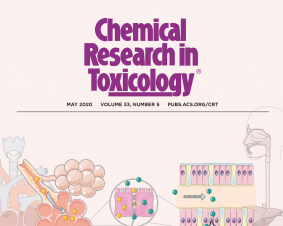 >
Spotlight June 2021: Endotoxin – the reason for false-positive toxicity testing for advanced materials?
>
Spotlight June 2021: Endotoxin – the reason for false-positive toxicity testing for advanced materials?
Advanced materials, but also nanomaterials are closely examined to determine whether they trigger biological effects that could be harmful to humans and the environment before they are used in products. This also includes such materials as titanium dioxide, which has been used in a wide variety of products for more than 50 years. A particularly important biological reaction to “foreign substances” in humans and animals is the inflammatory response, as this represents a defence mechanism in which the body defends itself with various reactions: redness, heating (fever), swelling and pain are the first signs and possibly lead to a functional impairment of the organ that is affected. As a result, this reaction is also particularly frequently studied in toxicology laboratories and almost as frequently misinterpreted.
But what are the reasons for the frequently false-positive results, e. g. with gold particles or the titanium dioxide particles mentioned above? It has long been known that a bacterial cell component is responsible for such false determinations. This is because the so-called “endotoxin” or lipopolysaccharide (LPS) is found everywhere in our environment, even without bacteria, and particularly likes to bind to small particles, such as nanoparticles [1, 2]. This endotoxin then triggers the defence reaction without the material itself having to contribute anything.
In their recent review article, the Italian/Spanish group draws attention to the fact that before measuring an inflammation-inducing effect of materials, it is essential to examine the material to determine whether it contains bacterial contaminants (endotoxin) [Mangini et al., 2021]. And in addition, they indicate that the selection of the appropriate determination method is also important, since the nanoparticles can interact with the test methods, causing additional errors that can lead to false-positive or even false-negative evaluation of the results. However, from a regulatory point of view there is no rule (except for medical applications) that requires the detection or absence of endotoxins when it comes to the toxicological evaluation of advanced materials. Thus, it can be assumed that many of these materials are contaminated with endotoxin and therefore the statements about their inflammatory capacity may be incorrect. The authors therefore present a decision tree that should be applied before any testing of nanomaterials or advanced materials to avoid exactly these mistakes. On the one hand, the question of whether endotoxin is present in the samples must be answered, and on the other hand, it must also be considered whether the appropriate test has been selected that should be used for the material in question.
The DaNa project also evaluates the literature on toxicity according to this criterion, among others, and has included the detection of endotoxin into the catalogue of evaluation points (see also https://nanopartikel.info/en/knowledge/literature-criteria-checklist/).
Original Publication:
Mangini, M et al. (2021). Interaction of nanoparticles with endotoxin Importance in nanosafety testing and exploitation for endotoxin binding. Nanotoxicology, 15(4): 558-576.
Further literature cited
- Bianchi, MG et al. (2017). Lipopolysaccharide Adsorbed to the Bio-Corona of TiO2 Nanoparticles Powerfully Activates Selected Pro-inflammatory Transduction Pathways. Front Immunol, 8 866.
- Li, Y et al. (2017). Bacterial endotoxin (lipopolysaccharide) binds to the surface of gold nanoparticles, interferes with biocorona formation and induces human monocyte inflammatory activation. Nanotoxicology, 11(9-10): 1157-1175.

Weitere Spotlights
Spotlight August 2021: Towards FAIR nanosafety data
In August we would like to present a paper on FAIR data. The paper published in Nature Nanotechnology in June 2021 summarises the challenges and provides recommendations for the efficient reuse of nanosafety data in line with the recently established FAIR guiding principles: findable, accessible, interoperable and reusable. This article summarises the know-how on the […]
Read moreSpotlight October 2020: Nanosafety – Topic of the Future
Research on nanosafety is a driver of innovation as the spotlight in July has demonstrated. But furthermore, this research field is built on routine as well if researchers look for the “needle in the haystack”. In many areas the safety research initiates the development of new methods, e.g. for the determination of nanoparticles within exposed organisms via […]
Read moreSpotlight October 2023: Improved hydrogen production through novel catalyst made of three metals
Hydrogen is one of the important energy carriers of the future when it comes to climate-relevant energy supply. For example, surplus electricity from wind turbines or solar plants can be converted into hydrogen, allowing the otherwise unused energy to be stored for longer periods. This hydrogen can be used to power trucks and buses for […]
Read moreSpotlight March 2023: How can photovoltaics be made safe and sustainable?
Conventional photovoltaic systems often have only low efficiency, i.e. only a fraction of the solar energy is converted into electrical energy and made usable. For this reason, research is being conducted into innovative materials that can significantly increase the energy yield and thus also enable more electrical energy to be generated from renewable sources. However, […]
Read more


